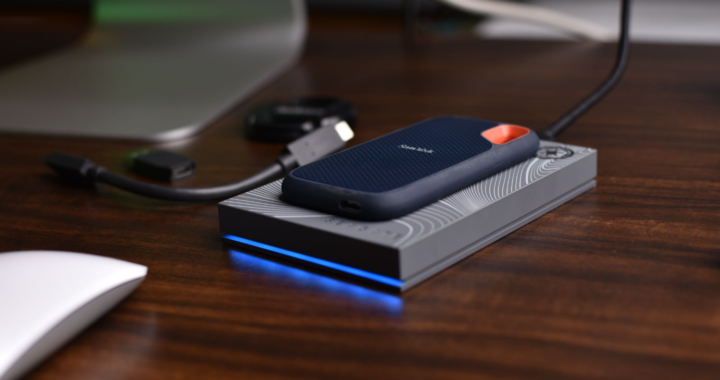Solid-state drives (SSDs) are storage devices that use flash memory to store data. These storage devices are unlike traditional hard disks, i.e., spinning magnetic disks. SSDs are not designed to have any moving parts and rely on a semiconductor-based memory chip to store and retrieve data.
Digital forensic experts may face some challenges when recovering data from SSDs, and yet there are becoming more and more common because of their utility. Before we discuss these challenges, let’s understand why SSDs are gaining popularity over HDDs.
SSDs Offer Several Advantages Over HDDs
Speed
SSDs are used for faster data transfer, so they are generally replacing HDDs. SSDs are also used to access files while providing improved responsiveness. The mechanical components are great for eliminating any delays in the transfer of data.
Reliability
With no moving parts, the SSD design tends to be more reliable and less prone to mechanical failure. SSDs are also known for being shock and physical impact resistant, ensuring their lifespan is more extended than HDDs.

Energy Efficiency
SSDs are also more energy efficient as they can provide data transfer without spinning a disk. On the other hand, HDDs are powered by a motor that spins and consumes energy while doing so. This traditional model is replaced by energy-efficient SSDs that can last longer and can be used with multiple devices such as laptops, smartphones, and cameras.
Compact Form Factor
SSDs are also much smaller in size, which means they can prove to be a significant design element when added to ultra-thin laptops, tablets, and portable devices while providing improved functionality.
SSDs Use In Various Applications
SSDs are used in many different applications for their ability to outperform traditional storage devices and for providing speed and reliability alongside compact design to a wide range of computing and storage applications.
Personal Computers
SSDs are most commonly used as a means for primary storage in desktops and laptops to improve overall performance. Using an SSD can ensure faster boot time, reduce software loading time and even improve the system’s responsiveness.
Enterprise Storage
Data centers and server environments can also use SSDs for their speed and for providing efficient storage solutions. The data access and processing are improved to enhance a server’s performance.
Consumer Electronics
SSDs are also used in consumer electronics such as smartphones, tablets, cameras, and gaming consoles to provide faster data transfer, smooth multimedia playback, and improved device performance.
Embedded Systems
SSDs are also used in embedded systems to provide industrial machinery and even medical devices. This ensures the devices are stable and reliable while efficiently transmitting data across different channels.
Cloud Storage and Data Centers
SSDs are often used by cloud storage services in their data centers to provide fast and reliable data transfer. The energy-efficient design of the SSDs enhances the performance of the applications and provides overall improved service.
Now that we have understood that benefits of SSDs. let’s look into the challenges that digital forensic experts often face while recovering data from these devices.
What Are Some Of The Challenges Faced By Digital Forensic Experts When Recovering Data From SSDs?
Digital forensic experts are often required to use specialized tools and techniques for recovering data from SSDs due to the special challenges that they might face. Here are some of the challenges that digital forensic experts may encounter during data recovery from solid-state drives (SSDs).
Wear Leveling
One reason SSDs have a longer lifespan is due to water leveling. This is the process of distributing data evenly across the memory cells so that there is no excessive wear on any cells. This also means that data is never stored sequentially on the SSD.
When digital forensic experts are reserving the data, they may find fragmented files, and the files have to be reconstructed for analysis if it is ever required.
Trim Command
Trim commands on SSDs provide data blocks so that some of the data cannot be used or erased. Once the trim command is executed, the data cannot be easily recovered and it’s sometimes impossible, even for digital forensic experts.
Data Remanence
The data on SSDs is often stored in different locations which poses a challenge for digital forensic experts that may find it hard to locate and recover the data, especially when there is overwriting. In this case, digital forensic experts have to deploy specialized tools and techniques for the process of data recovery.
Encryption
SSDs provide hardware-based encryption so that data is encrypted using a unique encryption key. Without this key, digital forensic experts cannot decrypt and access the data. This is another challenge that digital forensic experts might face, impeding the process of data recovery from an SSD.
Trim-Enabled Recovery
In some cases, the forensic tools that are used for data recovery from hard drives are not useful when recovering data from SSD. In this case, the file system structure must interpret the data to recover any data. Digital forensic experts may be required to use specialized tools that are more adept at handling the process of data recovery from SSDs.
Limited Write Endurance
While using an SSD, you get a limited number of write cycles until the memory cell begins to degrade. This means that if a digital forensic expert has to operate on an SSD, they can overwrite it, resulting in wear and even permanent loss of data on the SSD. This is why it is so important to write the drive only when necessary, and when all other options have been exhausted.
Solutions and Techniques Used By Digital Forensic Experts To Overcome These Hurdles
When recovering data from solid-state drives (SSD), a digital forensic expert may encounter challenges. These challenges can be overcome with a combination of techniques, tools, and solutions that have been gathered over time. These digital forensic solutions are the fruit of continuous practice and research, the implementation of methodologies surrounding SSD technologies, and research on how these technologies have evolved.
Here are some of the tried-and-true tools, techniques, and solutions that aid the data recovery process.

Acquisition and Preservation
To ensure that data recovery from the SSD is possible, digital forensic experts may focus on properly acquiring and preserving the SSD. This means using specialized tools and following the best practices for handling SSDs. The process of data recovery from SSD requires minimizing the impact on the drive as much as possible to ensure the contents are intact.
Wear Leveling and Data Recovery Tools
Digital forensic experts to use advanced wear leveling and data recovery tools when recovering data from SSDs. Thai allows them to use the data available on the SSD to also reconstruct fragmented files, recover deleted files and ensure the SSD sustains no damage during the process.
Trim Command Management
Digital forensic experts employ this technique to ensure that the data is securely retrieved during the evidence acquisition process. This allows the hardware write blocker to interact with the SSD firmware and ensure that the data is acquired and in good shape to be used.
Data Remanence Analysis
Digital forensic experts use advanced forensic techniques, including data carving and memory cell analyses, to ensure that the data, which has been overwritten, can be recovered. The residual data patterns can then be reconstructed to analyze with the help of the data remanence analysis.
Encryption Key Recovery
Encryption key recovery includes techniques such as searching for key artifacts and analyzing system memory for key remnants. These techniques can help digital forensic experts use the vulnerabilities of an encryption system to access encrypted data and recover it successfully.
Research and Collaboration
The use of firmware updates and encryption techniques can assist digital forensic experts in the process of research and collaboration with industry experts. The process of sharing knowledge, experience, and even insight into effective solutions gathered through trial and error can help the ongoing process of overcoming SSD-related issues.
Partner With The Right Digital Forensic Consultant
To overcome the challenges you may face when accessing data from an SSD, you might have to turn to a seasoned digital forensic consultant. They have the necessary expertise and knowledge in this area, especially when dealing with investigations.
Eclipse Forensics is one of the most trusted companies providing digital forensic expert services in Saint Augustine, Florida. Our company was founded by Jim Stafford in 2005 and has since been a part of hundreds of investigations. We provide expert analysis for cell phone searching, forensic audio services, or video forensics.
One of the great things about Eclipse Forensics is that we have decades’ worth of experience and notable citations in the high court, having worked on high-profile cases such as the Justin Barber case of 2005. Our company is also known for offering expert witness testimony which can be of immense significance alongside their forensic analysis.
Call now to learn more about expert witness testimony.

